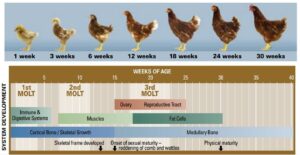The International Union for Conservation of Nature (IUCN) has established a system of categories for assessing the conservation status of species. These categories are used to recognize different levels of threat to species based on specific criteria. The IUCN Red List of Threatened Species is the most widely recognized and comprehensive source of information on the conservation status of species. The categories for threatened species, along with the criteria for recognizing them, are as follows:
Thank you for reading. Don't forget to subscribe & share!
1. Extinct (EX):
Criteria: The species is not known to exist in the wild or in captivity.
2. Extinct in the Wild (EW):
Criteria: The species survives only in captivity, cultivation, or as a naturalized population outside its historic range.
3. Critically Endangered (CR):
Criteria: The species faces an extremely high risk of extinction in the wild in the immediate future. This is based on factors such as a very small population size, severe habitat destruction, or other threats.
4. Endangered (EN):
Criteria: The species faces a very high risk of extinction in the wild in the near future. This is typically due to factors such as significant population decline, habitat degradation, or overexploitation.
5. Vulnerable (VU):
Criteria: The species faces a high risk of extinction in the wild in the medium-term future. This is often associated with declining population numbers, habitat loss, or other threats.
6. Near Threatened (NT):
Criteria: The species is not currently classified as threatened, but it is close to meeting the criteria for Vulnerable. It may be experiencing declining populations or facing threats that could lead to a higher threat category in the future.
7. Least Concern (LC):
Criteria: The species is not considered to be facing a high risk of extinction. It may have stable or increasing populations and is not currently threatened.
8. Data Deficient (DD):
Criteria: There is insufficient data to determine the species’ conservation status. More research and information are needed to assess its risk of extinction.
9. Not Evaluated (NE):
Criteria: The species has not been assessed for its conservation status under the IUCN Red List criteria.
The IUCN Red List uses specific quantitative and qualitative criteria to assign species to these categories. These criteria consider factors such as population size, population trends, geographic range, and threats to the species. A species may be assessed as threatened if it meets certain thresholds related to these criteria. It’s important to note that the IUCN Red List is a dynamic and continually updated database, and species’ statuses can change over time as new information becomes available or as conservation efforts are implemented. The assessments help guide conservation actions and prioritize resources for species at the greatest risk of extinction.









